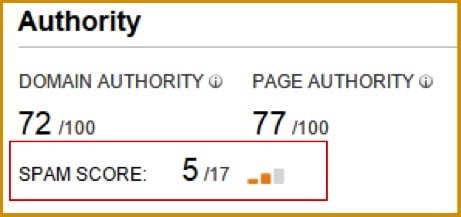David Campbell of Clickdesk.com submitted this guest blog through Semify’s SEO Guest Blog Program.
How to Hack Competitors’ Link Profiles for Better SERP Rankings
A few months ago, Moz released a comprehensive report on search engine ranking factors for 2015. Despite all the press this past year about how link building is dead, the data suggests that links are still the strongest ranking factor in the whole SEO game.
Links are easy, but good links are difficult. Every successful business has their own tactics for link building and link generation, but ideally, you should always be hunting for high value links.

If you’re using link-building software, you can quickly build tons and tons of links that point back to your website, even while you’re fast asleep. But there’s a catch. Google is smart and it can easily guess the quality of links pointing back to your website. If you focus on software that automates the link building process, you run the risk of being “blacklisted” from search engines. This risk is even greater with recent enhancements to Google’s ranking algorithms.
So what’s the alternative? Random manual outreach?? Rather than just emailing hundreds or thousands of websites looking for links, the most effective SEO strategists hack competitor link profiles and do link-building outreach to the most important sites in their competitors’ link profiles.
Here’s how to do it right.
Initial Analysis:
Chances are, you have multiple competitors ranking above you. Some businesses try to hack every link profile for competitors ranking higher than them, but this is a mistake. First you need to figure out if those sites have legitimate link profiles, then you can decide which ones to focus on “hacking”. This used to be a difficult manual process, but now there are a lot of tools that can help you analyze competitor link profiles in a general sense.

Last year, Moz introduced a new feature called “Spam Score.”
Spam Scores are produced by analyzing a website’s backlink profile. Moz’s spam score range is 0-17. 17 is the worst (i.e. a very spammy site) and 0 is the best (i.e. a nearly perfect site with only super-high-quality links pointing to it). When choosing a competitor to focus on, start with one that doesn’t have a very high spam score.
Another tool for analyzing a business/website’s link profile is the Link Research Tool. The LRT allows you to check up to 5 domains, and it produces two key metrics: LRT Power and LRT Trust.

You’ll want to select a site whose Power and Trust rankings are close to each other, and as high as possible. Better trust ranking means that the links that are pointing to the website are more trustworthy. In the example LRT analysis above, I would choose the site with the higher LRT Trust ranking. The other site is fine, but that one is better and hacking their links will provide more useful information.
Download the Backlink Profile:
When you know which website’s backlink profile you are going to hack, the next step is to download their backlink profile in a .csv or .xlsx file. This is a relatively simple process, but here are few things you should remember when you are downloading the backlink profile into a spreadsheet.
First of all, there are multiple tools that can help to automate the process. Moz’s Open Site Explorer is useful to a degree. Moz has a limited index, so you might not actually find all the links that are pointing back to the website. Other options are Ahrefs.com, SEMRush.com and Majestic.
Majestic has the largest index and offers a highly detailed comparison. But my recommendation is actually to use multiple tools (as many as you can), then remove the duplicates. That way you get the most complete link profile possible. It’s also useful to see how different tools sometimes view the same links differently.
Sort Links by Quality:
Now you have a link profile in your hand. This is where most people make a mistake. They download the list and simply start replicating it for their own website. That’s entirely the wrong move!
Although the link profile is “safe” on the whole (according to the tools you’ve used to capture it), we can’t say that all of the links in the profile are safe. Once you download the list, you have to sort the link profile on basis of quality.
This means you have to go through each link manually and break the list into multiple lists on basis of quality. The list will look something like this:

You can add more columns to it depending on your niche and process, but those are the columns I use when we hack any competitor’s website website for link building purposes at Clickdesk .
Prioritize, Outreach and Get Backlinks:
Once you divide the list into multiple columns, it’s time to prioritize which link you need to pick up first and then start finding their contact details so that you can write custom outreach emails to those sites. You’ll want to build a relationship with the best sites, and that always starts with personalized outreach.
To find contacts at the target websites, the best tool is BuzzStream. It saves a ton of time and allows you to write a bunch of customized emails quickly and effectively. Once you start receiving a response from those sites, the power is in your hands: start pitching guest blogs, offering your product for review, and doing anything else you can think of to get backlinks from those sites.
And remember, hacking competitor sites for the best and most effective backlinks is a way to start getting better links to your own site, but this is pointless in the long run if your own website content isn’t unique and powerful enough to convert random visitors into dedicated customers. Never forget that conversions are the goal, not just site traffic!
I hope that you’ll get started on link-hacking your competitors’ sites and you are on the road to success in 2016.